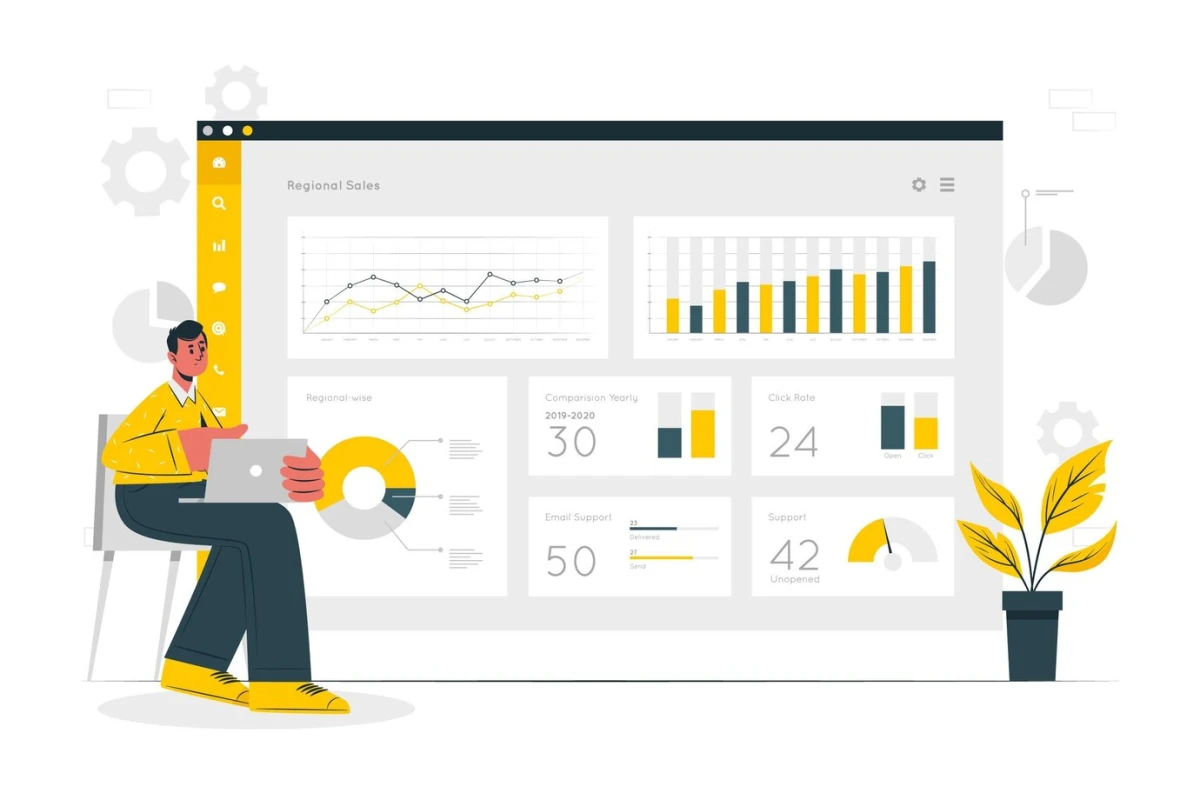
The Importance of Data Analytics in Digital Marketing Strategies
In a world ruled by data, analytics becomes a powerful tool in the hands of marketers. Imagine you have a magic magnifying glass that lets you see who your customers are, what interests them, which brands they love, and even when they pick up their phone after a long day at work. This is what data analytics offers! It's not just "peeking"—it’s a full-fledged tool that transforms your marketing from intuitive to informed and powerful.
Why Data? Or How to Avoid "Shooting in the Dark"
In the past, marketing was a bit like playing darts with closed eyes—you try to hit, but don’t always succeed. Thanks to data analytics, you’re no longer shooting in the dark—you know exactly where your audience is, what interests them, and when they’re ready to listen.
Example: Optimizing Ad Spend
Every marketer’s goal is to achieve maximum efficiency with minimal cost. Data analytics helps identify which advertising channels bring more leads and conversions. For example, if you notice that your Facebook ads perform better among women aged 25–35 interested in fitness, you can reduce spending on less effective platforms and focus on Facebook for this audience. It's like building a solid bridge instead of tossing planks over a canyon and hoping someone will cross it.
How It Works: Your Target Audience, Close and Clear
Data analytics allows you to deeply understand your target audience. With tools like Google Analytics, for example, you can learn which regions drive the most traffic, the time of day when users are most active, and even the devices they use. So, if you’re planning an ad campaign for a new fitness app, you know it’s better to invest in evening ads (when potential users are home) and target mobile ads since your audience prefers them.
Example: "Reading Between the Lines" or What Clicks Reveal
Once, a company selling natural cosmetics noticed that most customers read their articles on the environmental impact of their products. Based on this analysis, they updated their marketing to emphasize the eco-friendly benefits of the product and included more information on natural ingredients. The result? Sales increased by 35%.
Optimizing Campaign Strategies: Choosing the Right Tools
The market offers numerous analytics tools, but for a successful marketing campaign, you don’t need to use them all at once. For example, Facebook Insights allows a deep dive into social media audience behavior, while Google Analytics shows how users interact with your website. Or, if you want more engagement, use heatmap analytics (like Hotjar)—they show where on the site customers linger the longest.
Humor in Numbers: Is "The Most Popular" Really "The Best"?
Sometimes marketers think like students in an exam: "More is always better." But data analytics often dispels this myth. An anecdotal example: a company launched an ad campaign with “million-followers” bloggers, but analysis showed that most purchases came from followers of a lesser-known but very active blogger with 20,000 followers.
What’s Next? Keep Your Insights Updated
Data analytics is like a puzzle game where the picture constantly changes. Audience preferences can shift, trends come and go, and competition gets tougher. So, it’s essential to regularly update analytical reports and check if your assumptions are still accurate.
Why Analysis Matters to Everyone
Data analytics is not just about understanding numbers. It’s a tool that allows marketers to better understand their audience, make informed decisions, and ultimately make your business more profitable. So, if you haven’t yet "befriended" analytics, it’s high time to start. As they say in business: Knowing your customer is half the battle; analyzing their behavior is the other half.

Data Analytics in Business
